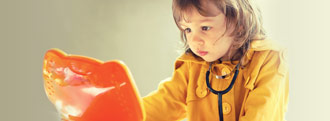Our Health Library information does not replace the advice of a doctor. Please be advised that this information is made available to assist our patients to learn more about their health. Our providers may not see and/or treat all topics found herein.
Teething
Teething is a process in which the first set of teeth, called primary teeth, erupt and break through the gums. Although the timing for each child varies, most babies get their first tooth at age 6 to 10 months and have a full set of 20 primary teeth by the age of 3 years.
Teething symptoms may begin about 3 to 5 days before a tooth breaks the skin. But symptoms can be present off and on for 1 to 2 months. The most common symptoms of teething include:
- Swelling, tenderness, or discomfort in the gums at the site of the erupting tooth.
- Increased saliva, which can cause drooling. Drooling may cause a rash on the chin, face, or chest.
- Biting on fingers or toys to try to relieve the gum discomfort.
- Refusing to eat and drink because of mouth soreness.
- Irritability and difficulty sleeping.
Teething may cause a mild increase in your child's temperature. But if the temperature is higher than 100.4°F (38°C), look for symptoms that may be related to an infection or illness.
Many babies don't seem affected by teething. If your baby is uncomfortable, home treatment (such as teething rings, cold foods and liquids, and gum massage) usually helps. Symptoms usually improve or disappear as soon as the tooth breaks through the skin.
Current as of: October 24, 2024






